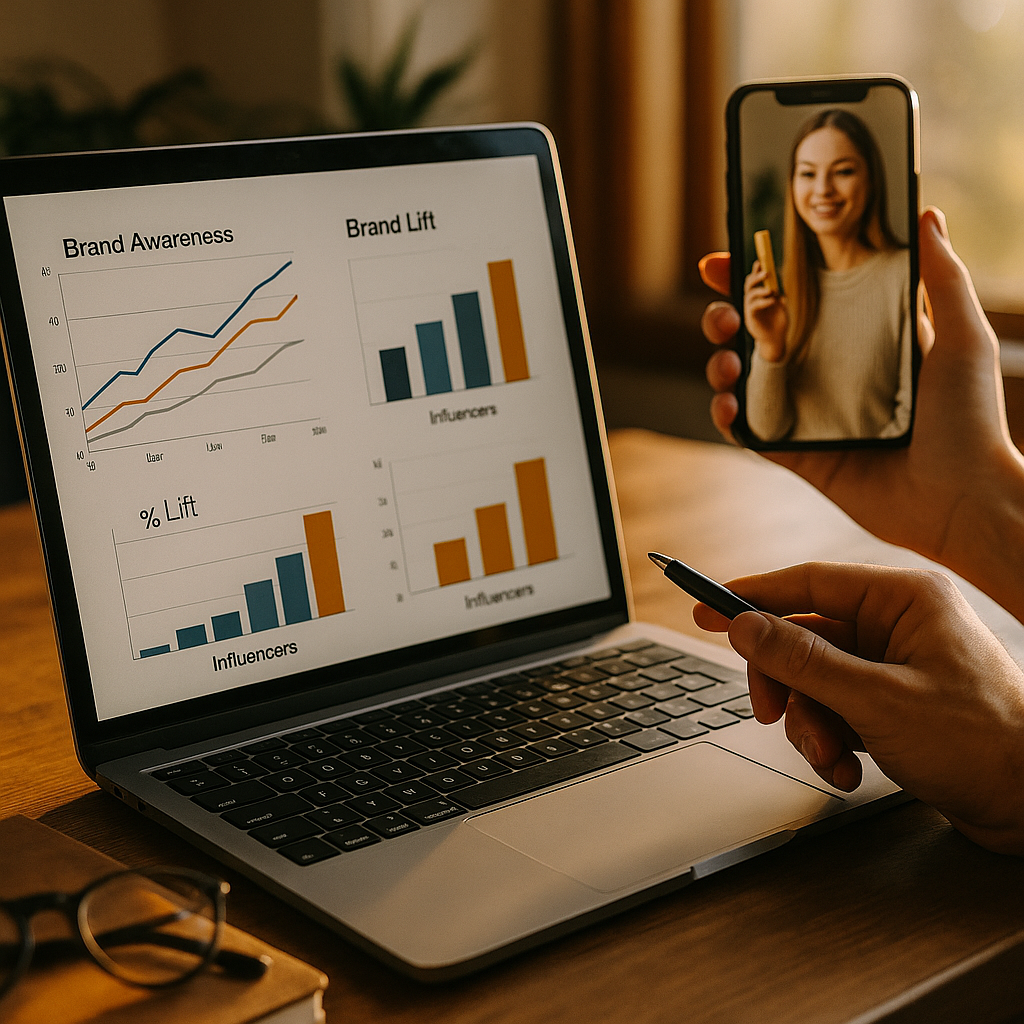Measuring brand lift through influencer marketing campaigns is vital for brands aiming to track real impact and maximize ROI. Combining influencers’ reach with robust analytics allows marketers to gauge shifts in brand perception and audience engagement. But which metrics matter most, and how do you measure true uplift? Let’s break down effective measurement strategies every brand should use in 2025.
Understanding Brand Lift Metrics in Influencer Marketing
Brand lift reflects a measurable increase in consumer awareness, perception, or intent resulting from a marketing initiative. In influencer marketing, brands can observe shifts in key performance indicators after a campaign. Common brand lift metrics include:
- Brand Awareness: Recognizability and recall measured through surveys or brand-specific search volume.
- Consideration: The degree to which audiences think about your brand when making purchase decisions, tracked via intent surveys or webpage visits.
- Favorability: How positively an audience views your brand compared to competitors, often observed through sentiment analysis.
- Purchase Intent: The likelihood of an audience intending to buy, measured with post-campaign intent questions or conversion rates.
Understanding these metrics helps you map influencer efforts to business outcomes and set benchmarks for future campaigns.
Selecting the Right Influencer Campaign Measurement Tools
Key to measuring influencer brand lift is selecting tools that provide accurate, actionable data. Solutions often include:
- Social Listening Platforms: Analyze changes in brand conversation volume, sentiment, and share of voice post-campaign.
- Survey Technologies: Services like Google Surveys or SurveyMonkey can target exposed vs. control groups to measure shifts in awareness and consideration.
- Attribution Analytics: Advanced platforms link influencer-driven content to website actions and conversions using unique URLs, UTM parameters, or discount codes.
- Branded Search Analysis: Tools such as Google Search Console help assess increases in brand and product keyword searches during and after campaigns.
For maximum credibility, combine quantitative tools with qualitative insights, such as comment analysis and influencer feedback. Ensure your choice respects privacy regulations and transparent data handling—principles central to EEAT (Experience, Expertise, Authoritativeness, and Trustworthiness).
Designing Brand Lift Studies for Influencer Campaigns
A well-structured brand lift study enables data-backed decisions. To execute one for an influencer campaign, follow these steps:
- Define Objectives: Identify the brand perception or awareness shift you’re hoping to achieve.
- Select Exposed and Control Groups: Use influencer audience data and platform targeting to reach similar demographics, with one group unexposed to campaign content for comparison.
- Pre- and Post-Campaign Surveys: Design questions around awareness, favorability, and intent, maintaining consistency for both groups.
- Track Organic Metrics: Supplement survey results with organic metrics such as search trends, direct traffic, or social engagement spikes.
This blended approach isolates the incremental effect of the influencer campaign. Leading influencer platforms now offer built-in brand lift studies, making the process even more accessible for brands in 2025.
Interpreting Results: Turning Brand Lift Data into Insights
Once data is gathered, insightful analysis is essential. Key steps include:
- Compare Against Baselines: Evaluate pre- and post-campaign metrics alongside historical brand performance.
- Assess Incrementality: Ensure observed lifts are not solely due to seasonal or external market effects by using control groups.
- Segment Data: Break down results by demographics, influencer types, platforms, and campaign formats to identify top-performing segments.
- Tie Results to Business Goals: Link improvements in awareness or intent to downstream actions such as web visits, leads, or sales.
Actionable reporting enables marketers to double down on strategies that drive highest ROI and pivot quickly from underperforming tactics.
Optimizing Future Campaigns Based on Brand Lift Measurement
Continuous optimization is fundamental for long-term influencer marketing success. Employ these practices:
- Iterate on Creative and Influencer Selection: Use data to refine messaging and identify influencer profiles that resonate best.
- Invest in Long-term Partnerships: Data increasingly confirms that sustained influencer relationships amplify brand lift over time.
- Test New Channels: If data shows emerging platforms are driving higher lift, allocate future budget to these channels.
- Share Learnings Across Teams: Integrate influencer data with other marketing insights for unified, multichannel brand strategy.
This data-driven optimization ensures your influencer marketing campaigns consistently deliver measurable brand impact.
Conclusion: Maximize Brand Lift Through Data-Driven Influencer Marketing
Measuring brand lift through influencer marketing campaigns transforms influencer partnerships from a creative tactic into a strategic growth driver. By deploying robust tools, structured studies, and insightful analysis, brands empower themselves to achieve—and prove—real business results from every influencer activation.
FAQs: Measuring Brand Lift Through Influencer Marketing Campaigns
-
What is brand lift in influencer marketing?
Brand lift measures the positive change in consumer awareness, perception, or intent after an influencer marketing campaign, showing how audiences now view or act on your brand versus before exposure.
-
How do I measure brand lift from influencer partnerships?
Combine survey-based studies (comparing exposed and control groups) with analytics tools tracking search trends, social engagement, and conversion metrics directly linked to influencer activity.
-
What are the most important metrics for brand lift?
Focus on brand awareness, consideration, favorability, and purchase intent—measured through surveys, social listening, search volume, and direct site behavior after influencer campaigns.
-
How frequently should brand lift studies be conducted?
Ideally, run brand lift studies at the conclusion of each major campaign, and periodically for always-on influencer programs, ensuring insights drive continuous optimization throughout the year.
-
Does influencer marketing really drive brand lift?
Yes. Recent studies in 2025 consistently confirm that influencer campaigns, especially those involving authentic creators, can significantly increase brand awareness, favorability, and even purchase intent.
